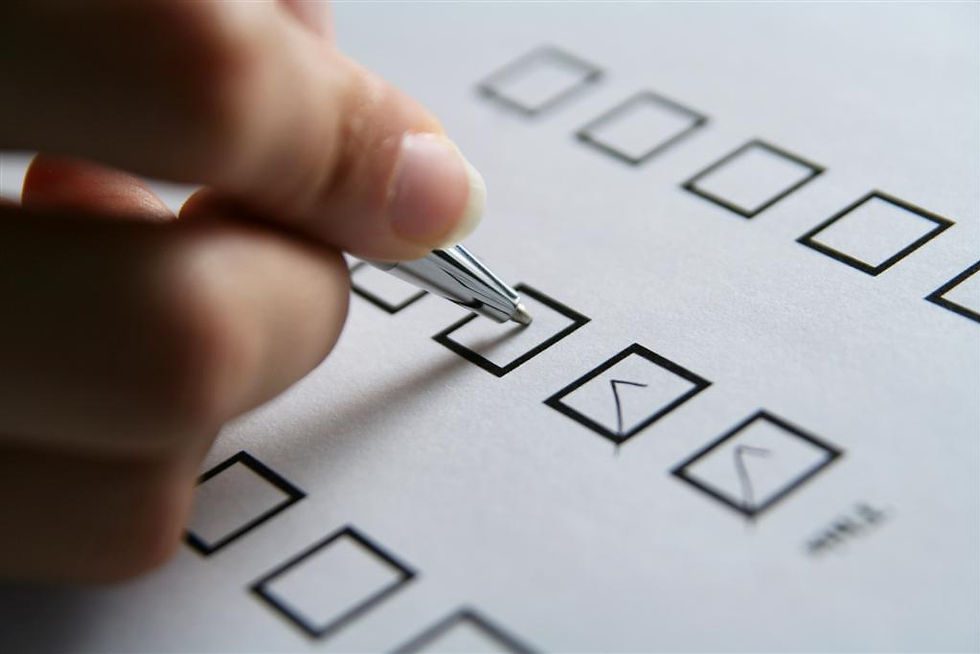Conspiracy theories and Misinformation: Part 2
- Kamikun Adebajo

- Apr 29, 2020
- 4 min read
Updated: Mar 17, 2022
Hola everyone, how’s it going? Welcome to Conspiracy theories and Misinformation Part 2. Last time, we talked about how conspiracy theories are formed and how to detect them but today we are going to talk about Misinformation. Previously, I said misinformation is the main ingredient in conspiracy theories so now we are going to look more closely at what misinformation is and what it can do on its own.

images from next.gov and losspreventionmedia
Misinformation according to the Oxford dictionary, is false or inaccurate information, especially that which is deliberately intended to deceive. AKA, something that is not true. Now, remember, misinformation being presented as true fact often intended to push a system of beliefs is a conspiracy theory. With that established, let’s transition into misinformation. Personally, I think that there are two types of misinformation based on the intention of the informer. The first is misinformation with good intentions or no hidden agenda. The other one is misinformation with a hidden agenda. An example of the first is hearing someone say that there would be a public holiday on the 2nd of May. Now, even though I have not confirmed this, I go and tell my entire class not to come to school on the 2nd of May because honestly, we don’t like school that much anyway. In this case, the information is wrong because there is usually no public holiday on the 2nd in Nigeria. The original informer could have been referring to a public holiday in another country, but I did not stay long enough to hear that part. Looking at this situation, there is really no hidden agenda. I just wanted to inform everyone because I thought the information would be beneficial to them. This type of misinformation is kind of the lesser of the evils because it’s still wrong, but it was out of innocence.
The other type of misinformation is the black sheep. In this case, the informer usually has a hidden agenda. Sound familiar? That’s because this is just pure lying. Misinformation with an intent to deceive. An example is telling someone that an event on the 9th is actually on the 17th because I don’t want them to come. This is straight-up lying because I know the true information, but I intentionally give misinformation because of my hidden agenda which is not wanting them to attend. So, you see, misinformation type 2 is Wrong knowledge + hidden agenda. The difference between this kind of misinformation and conspiracy theories is really little. The goal of conspiracy theories is usually large scale, like starting a movement or creating a system of beliefs while misinformation with intent to deceive is usually on a smaller scale like getting out of trouble or getting revenge.
Another method of classifying these types of misinformation is based on the amount of truth. In some cases, it’s the truth but in the wrong scenario like in the first example, sometimes it’s twisted like the second example and in other times, it’s just wrong like saying that Kenya is an Asian country.
So now that we have a pretty good idea of what conspiracy theories and misinformation are, let’s try out our knowledge in the real world.
An example of a conspiracy theory is the misconception that vaccines/immunizations cause Autism. This is actually one of the main problems that the pediatric health system deals with especially in the Western World because some people started a movement based on research that was conducted in the 80s/90s on the effects of vaccines and immunizations. This research concluded that vaccines cause autism in children, but it was not peer reviewed or approved by any medical organizations. And even after dozens of research experiments have been conducted disproving this, some people still believe otherwise because of that one “scientific” evidence and the people pushing the agenda.
Now onto misinformation, there are so many examples. Good examples of type one are the way rumors spread on social media or misinformation about COVID like it does not affect Africans. Some people believe it is a disease that affects only rich people (for some reason). Some just think we are having an abnormally long public holiday.
Misinformation 2. Oh goodness. Where do we start? Our governments, Anti-climate change activism, or those millions of online scams even those with “testimonials” that say they work but actually don’t. Even religious institutions, unfortunately, have to be called out. We have all seen that pastor that raises people up from the dead mysteriously or claims to have God’s phone number. Another branch of misinformation that we may not think of is stereotypes. Stereotyping is somewhat of a mix of all the things we discussed based on the context of info, the scenario, and the intent but that one is a story for another day.
It’s quite sad that we live in a world that creates so much sadness and hurt through misinformation but instead of complaining, we can adapt. We all dream of creating the perfect world, but we can only get there by standing up for what’s right. To do this, we need to know what's wrong and how to stop it. So next time you encounter something that’s off, let’s change our attitude from “there’s no hope for this world” to “that's enough”.
Whew! That’s a wrap.
Thank you, dear reader, for reading Conspiracy theories and Misinformation Part 2.
I hope that you are staying safe and at home. Stay tuned for more interesting topics and if you want me to talk about something, let me know in the comments below.
Word of encouragement: The phrase “you can change the world” is not only a personal but a communal call to action.
Kamikun.



Comments